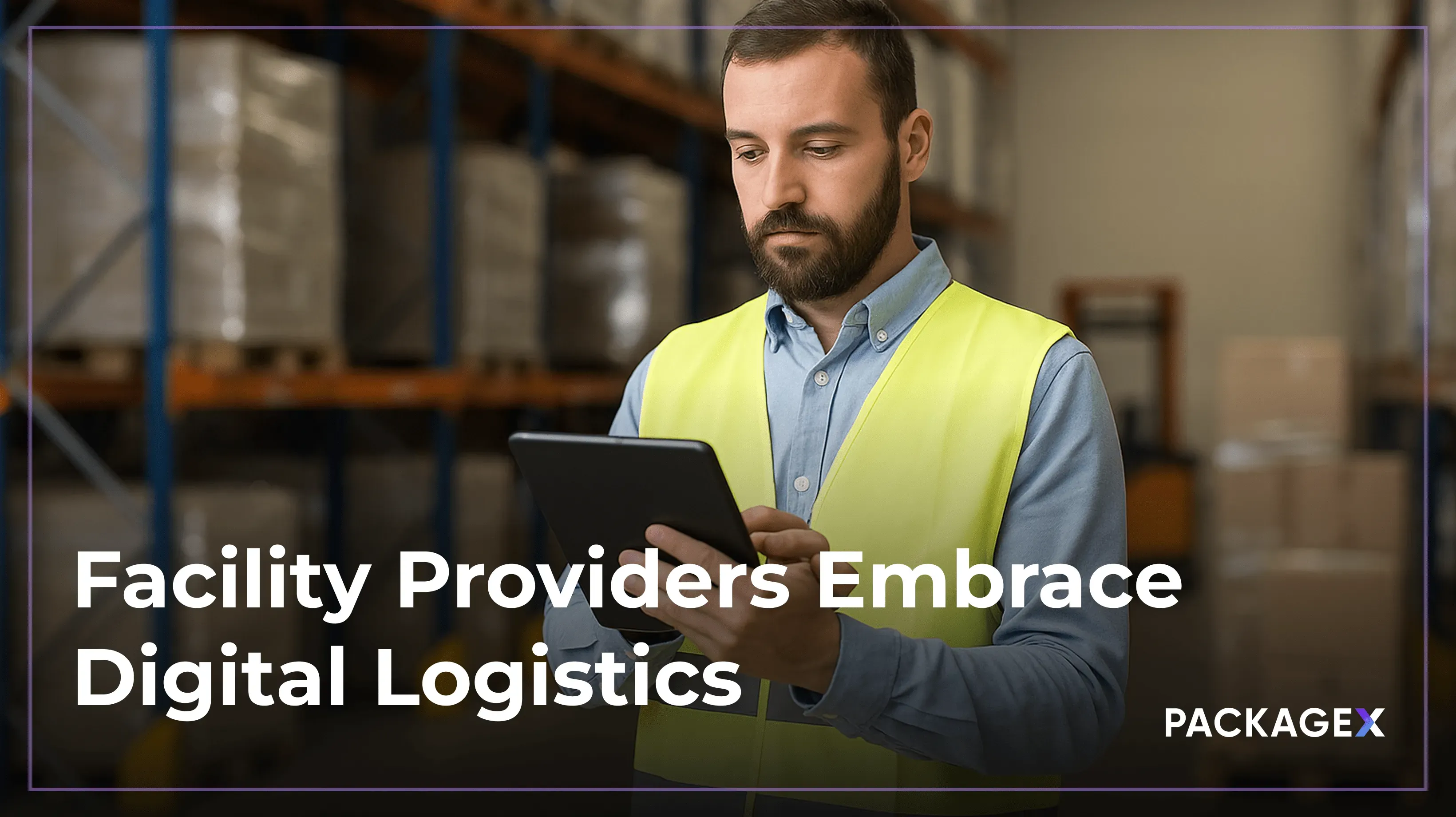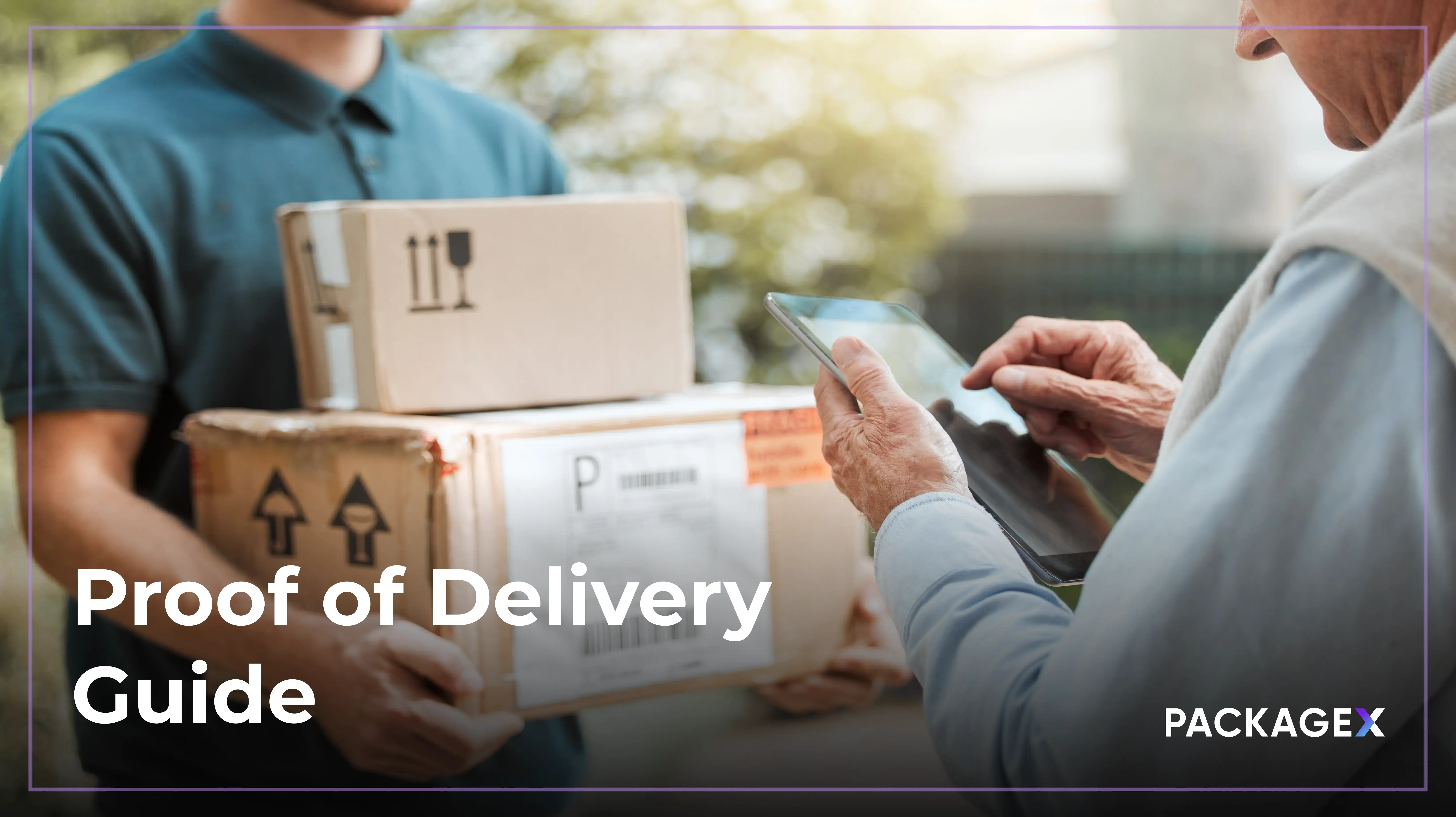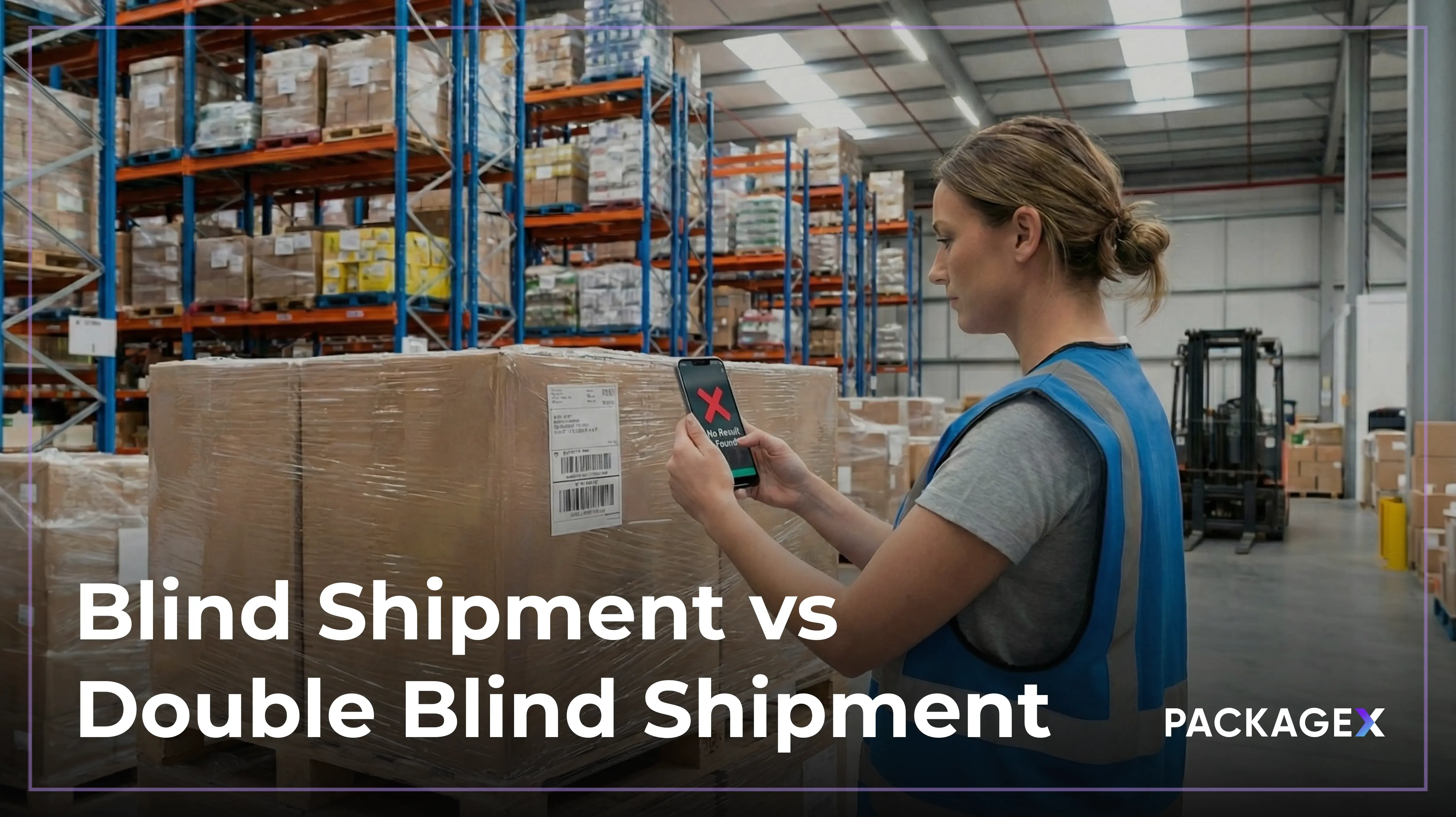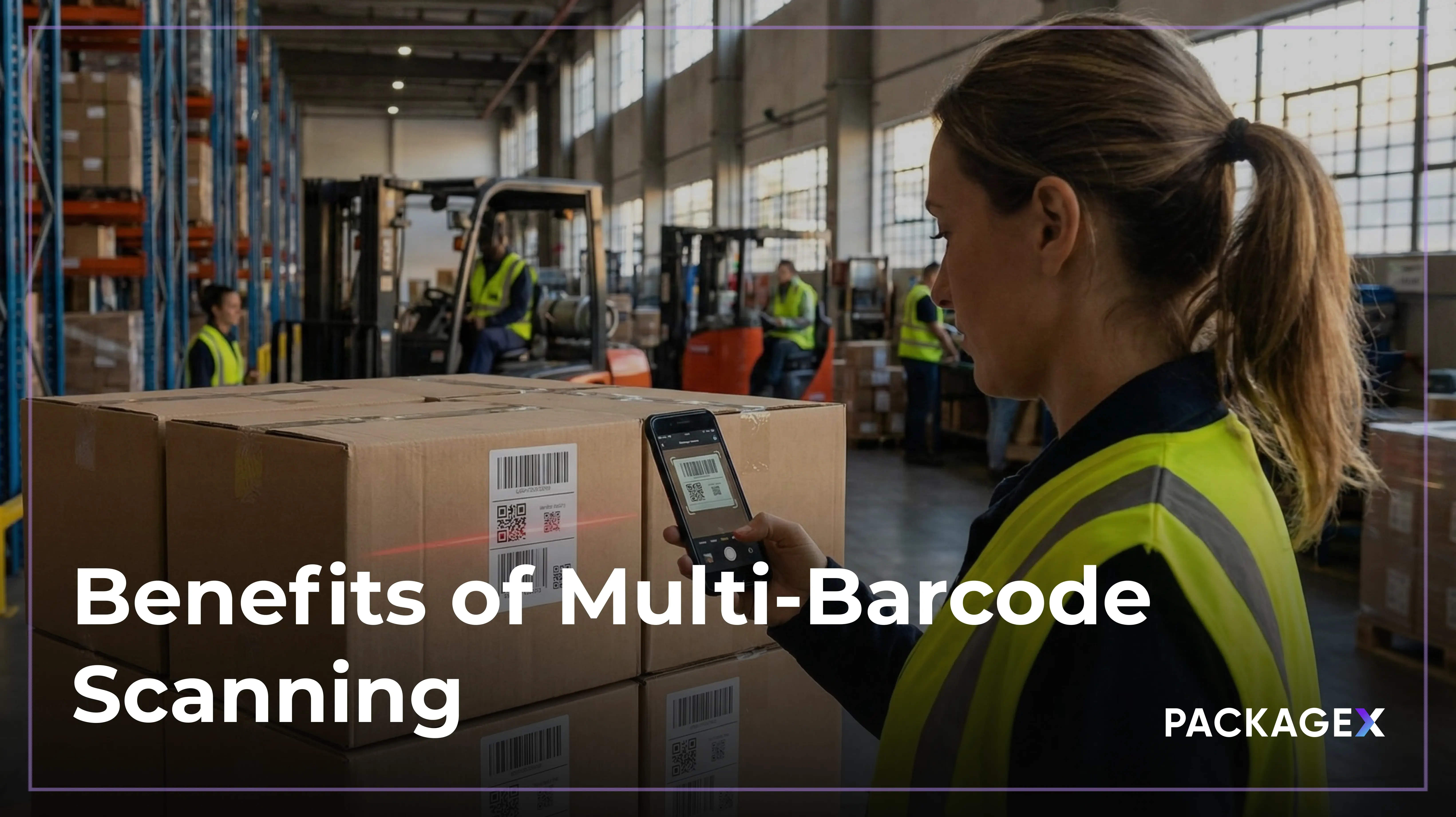A facility service provider is responsible for maintaining the smooth operation of logistics facilities, such as warehouses and distribution hubs. From inventory management to site maintenance, these services are critical to logistics operations.
The facility management market is on a strong upward trend. It’s projected to reach $2284.8 trillion by 2032, growing at a compound annual growth rate (CAGR) of 8.2%.
Despite this growth, many logistics facilities still rely on outdated processes. More than 50% of logistics carrier facilities are not yet digitally integrated. These gaps can lead to delays, higher costs, and poor visibility.
Facility service providers adopting digital transformation tools like automation, IoT, and real-time analytics are improving performance and gaining a clear competitive advantage. With pressure building across the supply chain, upgrading how logistics facilities are managed has become a necessity.
What is Logistics Facility Management?
Logistics facility management is the control and coordination of key spaces like warehouses, transportation hubs, and storage centers that move goods across supply chains. It includes everything from layout planning and security to maintenance and staff safety.
Top-performing facility service providers utilize smart facility services to optimize inventory management, prevent losses, and reduce costs. This includes integrating warehouse data, automating work orders, and tracking performance in real-time.
What Does a Facility Service Provider Offer?
A facility service provider manages the day-to-day operations that keep commercial and industrial buildings functional, efficient, and safe. These providers handle a wide scope of tasks such as preventive maintenance, HVAC checks, electrical repairs, access control, and workspace configuration.
Whether operating a single logistics facility or a large logistics carrier facility, companies often rely on a facility management service provider to keep systems running without disruption. These services directly impact worker productivity, regulatory compliance, and asset longevity.
By integrating smart technologies and structured processes, today’s facility service providers go beyond routine tasks, they enable measurable performance gains across the entire supply chain.
Key Components of Logistics Facility Management
Running a logistics carrier facility in the U.S. demands precision and adaptability. Each step, ranging from facility design to supply chain optimization, adds to the value. A facility service provider must keep goods moving, reduce downtime, and protect people and assets, all while maintaining cost efficiency.
According to CBRE, modern logistics facilities are now built with 36 to 40 ft clear heights and tech-ready layouts to support automation and inventory systems.
Here’s what top facility service providers focus on:
Facility Design and Construction
Smart design enhances traffic flow, promotes safety, and reduces operational costs. Planning begins with the right facility layout and continues through infrastructure built for automation and real-time systems.
Warehouse Management
Warehouse operations depend on accurate real-time inventory management and smooth pick-and-pack processes. Over 70% of logistics facilities in the U.S. now rely on barcode scanning and WMS tools to avoid fulfillment errors.
Transportation Hub Management
Efficient transportation management links distribution centers with retail and eCommerce. Route optimization can cut fuel costs by up to 15%, according to industry reports.
Maintenance and Operations
Downtime costs money. That’s why more facility teams use automation tools for preventative maintenance. Reducing breakdowns improves asset life and lowers emergency repair costs.
Security Management
With cargo theft rising across U.S. ports and distribution hubs, strong security management is non-negotiable. Access controls, asset management, and video monitoring protect goods and people.
Resource Management
Labor shortages affect productivity. Optimizing space utilization and workforce planning helps facility leaders stretch resources without burning out teams.
Process Optimization
Facilities that use real-time inventory data and predictive models gain faster insights and make quicker decisions. Industry reports highlight that predictive analytics can improve supply chain operations by 20–30%.
Safety and Risk Management
A safe facility runs better. OSHA data shows that well-managed logistics sites report fewer injuries, lower insurance claims, and smoother audits.
Each of these functions supports better service delivery, lower costs, and competitive positioning.
Challenges Facility Service Providers Face Today
Every facility service provider working across logistics facilities and carrier hubs faces a mix of daily pressures and structural issues. These are not addressed as abstract problems, they affect productivity, service levels, and cost control.
1. Outdated Systems
Many facility service providers still depend on legacy tools and paper-based processes. This slows down operations and limits visibility across logistics carrier facilities.
2. Budget Pressure
Without sufficient funding, it’s challenging to enhance infrastructure or invest in scalable facility management services.
3. Staffing Gaps
There’s a shortage of skilled workers in logistics and facility management roles. This puts stress on both operations and timelines.
4. Reactive Maintenance
Waiting until things break creates delays and unexpected costs. Facility management service providers must shift toward proactive service models.
5. Compliance and Reporting
Keeping up with safety rules, building codes, and environmental standards can be time-consuming and expensive, especially when digital systems are not in place.
6. Space and Resource Waste
Poor layout or resource planning in a logistics facility creates bottlenecks and underused space.
7. Data Without Direction
Facilities generate huge amounts of data, but without connected systems, most of it is not used to improve performance or reduce inefficiencies.
Benefits of Digital Transformation in Facility Services
Digital transformation brings measurable gains for any logistics facility aiming to operate smarter. The following are some proven benefits of facility service management.
1. Increased Efficiency
Digital tools remove bottlenecks. Facility management providers can automate maintenance schedules, route deliveries more effectively, and monitor systems in real-time. This leads to faster turnaround times and fewer errors on the ground.
2. Cost Savings
Smart automation reduces wasted labor hours and energy use. Predictive maintenance flags potential failures before breakdowns happen, avoiding costly repairs and downtime.
3. Safer Operations
With real-time monitoring and automated alerts, safety issues get addressed faster. Access control, surveillance integrations, and environmental monitoring help logistics carrier facilities improve site security.
4. Better Customer Experience
Digital systems streamline delivery and response times. Customers benefit from faster issue resolution, better transparency, and consistent service quality. When expectations are met or exceeded, satisfaction follows.
5. Smarter Decision-Making
Every action within a facility generates data. That data becomes a guide for performance tracking, budgeting, and long-term strategy. With the right dashboards, facility service providers make better decisions.
Top Technologies Powering Smart Facility Services
Facility service providers across the U.S. are under pressure to cut costs, improve speed, and raise operational standards. Key technologies now shape modern facility management:
- RFID and barcode scanners boost traceability and cut manual entry errors.
- WMS and TMS platforms integrate warehouse and transport operations.
- IoT sensors provide real-time environmental and equipment data.
- Fleet optimization software reduces delays and idle costs.
- Artificial intelligence supports predictive analytics and load planning.
A reliable facility service provider understands how to connect these tools for real business value.
How to Digitize Your Facility Services: Step-by-Step Process
This section provides a practical framework for facility service providers and logistics facility operators to move from analog to digital systems with purpose and control. Here’s a step-by-step process:
Step 1: Assess Needs and Identify Gaps
Begin by reviewing your existing facility services and identifying where inefficiencies are holding you back. Focus on areas like:
- Inventory tracking
- Order fulfillment
- Staff coordination
- Equipment maintenance
- Manual data entry
For most facility management providers, delays often stem from disconnected systems or reliance on spreadsheets.
Step 2: Choose the Right Platform
Look for solutions that match your facility’s scale and complexity. Common tools include:
- Warehouse Management Systems (WMS)
- Computerized Maintenance Management Systems (CMMS)
- Asset tracking software
- IoT-enabled monitoring for safety and compliance
- Cloud-based scheduling and communications
Don’t overbuy, focus on systems that offer clear ROI. Make sure any system supports facility design flexibility and integrates easily with your current workflows.
Step 3: Build and Execute the Integration Plan
Create a rollout plan that minimizes downtime. That include:
- Timeline and milestones
- Department-specific training
- Data migration checkpoints
- Internal communication to reduce resistance
Assign ownership across roles, operations, IT, and frontline teams. This keeps your logistics facility aligned and ready for action.
Integrating across logistics carrier facilities and warehouse locations helps unify tracking, improve real-time updates, and speed up response times.
Measuring ROI and Optimization
Facility management services need clear, measurable returns to justify technology upgrades. Many U.S. logistics facilities have seen operational costs drop by up to 25% after implementing digital tracking and inventory tools.
Track key performance indicators that matter:
Downtime, order fulfillment accuracy, asset utilization, and labor efficiency. Logistics facility ROI relies on smarter resource use.
Use cost analysis models and supply chain management tools to keep improving. Static systems lose money. Adaptive systems seems to help alot.
Digital facility service providers and facility management service providers that monitor performance consistently outperform reactive ones. That’s the competitive edge.
How PackageX Supports Facility Service Providers?
PackageX gives facility service teams the visibility and speed they need to keep logistics operations moving. With unified APIs, real-time updates, and simple setup, it helps manage everything from logistics, carrier facility tracking to package flow inside distribution hubs. No extra hardware. No steep learning curve.
Here’s how PackageX helps:
- Real-time visibility across every logistics facility using one all-in-one platform.
- Reduced delays with smart package tracking built for speed.
- Works across devices and locations without custom code or vendor lock-in.
- Ready-to-use logistics API with native integrations for last-mile and last-yard optimization.
Get a demo and see how PackageX can help your team work smarter!
FAQs
How do facility service providers digitize logistics operations?
A facility service provider digitizes logistics by using tools like WMS, IoT sensors, and real-time analytics. These systems help reduce manual work and improve delivery speed. Digital upgrades also improve visibility across every logistics facility.
What are the key steps to digitalize facility management services?
A facility service provider starts by assessing gaps, selecting tools like CMMS, and building a rollout plan. Integration, staff training, and performance tracking follow. This structure improves how facility management services operate at scale.
Why is digital transformation important for a facility management provider?
Digital tools help a facility management provider cut costs, boost accuracy, and manage assets in real time. Facilities that digitize see faster maintenance response and fewer delays. It also supports better safety and compliance.
What technologies help logistics facility service providers work more efficiently?
A facility service provider can use RFID, barcode systems, AI, and cloud dashboards to improve speed and precision. These tools cut waste and lower downtime. Smart tech keeps logistics carrier facilities running on schedule.




